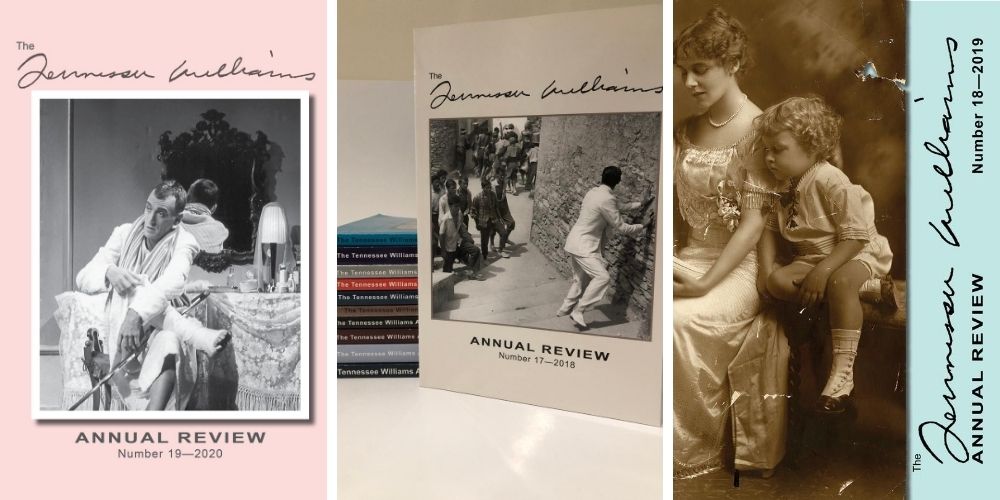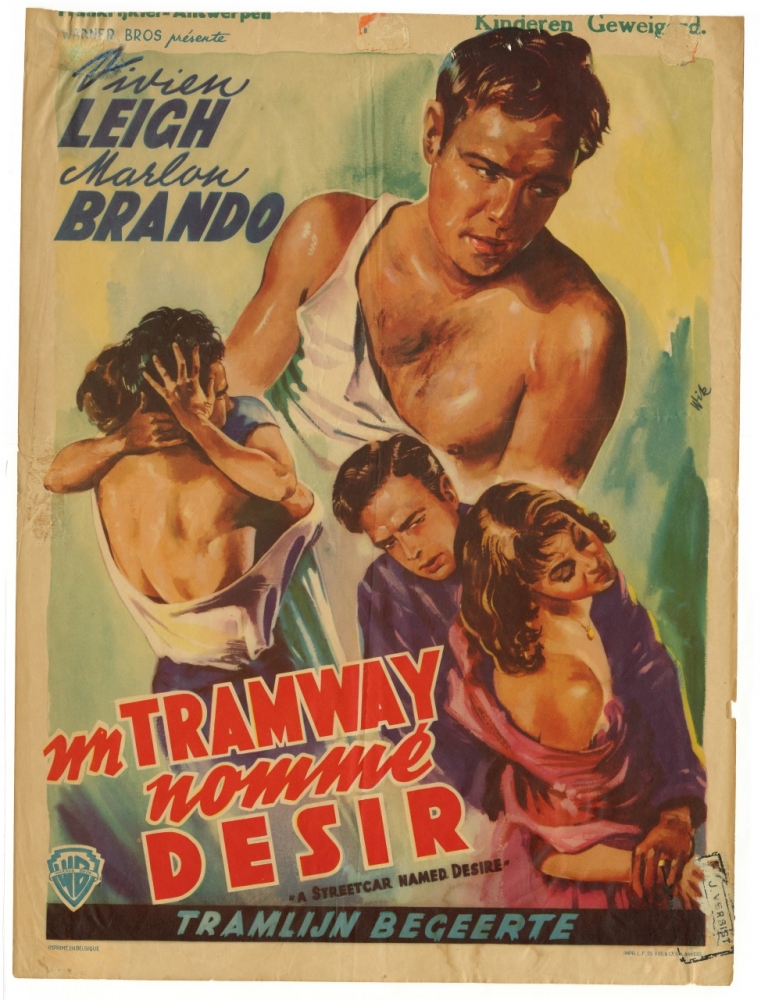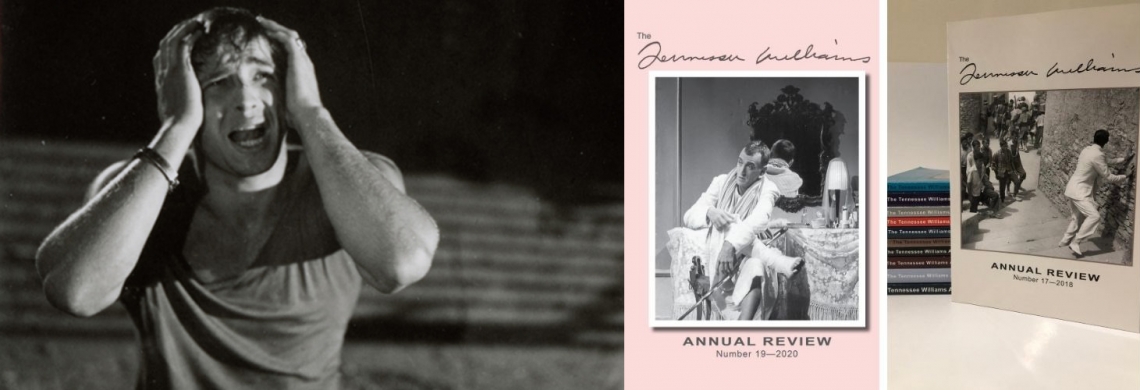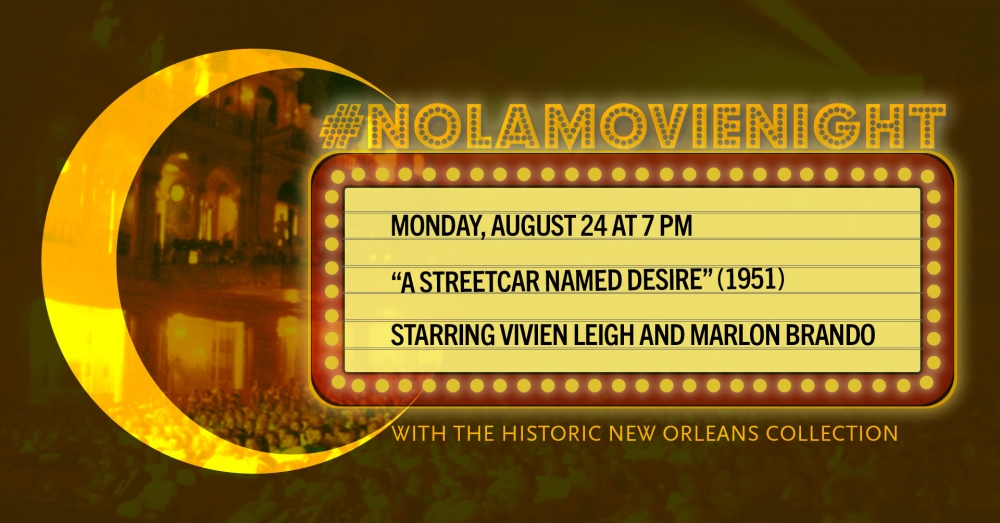The Tennessee Williams Annual Review was founded in 1998 and is published by The Historic New Orleans Collection. Its digital archive (which contains a link for purchasing print copies) is a deep reservoir of scholarly consideration of Williams’s literary achievements, his life and times, and his profound and continuing influence on the world’s arts and letters. The Review also features Williams works and materials found nowhere else in print, including plays and poetry unearthed from the archives, his mother's gripping diary entries, and Vivien Leigh's own collection of behind-the-scenes photographs taken on the set during the filming of A Streetcar Named Desire (2009 issue, print edition only). To set the stage (as it were) for the August 24 #NolaMovieNight group screening of the 1951 film version of Streetcar, First Draft reached out to two Tennessee Williams Annual Review principals for insight into the publication and some thoughts on the film’s cultural impact.
Robert Bray, professor emeritus at Middle Tennessee State University, is founding and consulting editor of the Tennessee Williams Annual Review and founding director of the Tennessee Williams Scholars Conference of the Tennessee Williams and New Orleans Literary Festival. The Review’s present editor-in-chief, R. Barton Palmer, is Calhoun Lemon Professor Emeritus of Literature at Clemson University, where he directed the World Cinema program. Together, Bray and Palmer cowrote 2009’s Hollywood’s Tennessee: The Williams Films and Postwar America.

The Tennessee Williams Annual Review is the only scholarly journal exclusively devoted to the exploration of Williams's work. Copies can be purchased from The Shop at The Collection.
Q: What is the Tennessee Williams Annual Review? What are the challenges facing scholarship devoted to the life and works of Tennessee Williams in the current academic environment? And what is ahead for the Tennessee Williams Annual Review in these circumstances?
Robert Bray: In early 1994, Patricia Brady, the president of the Tennessee Williams and New Orleans Literary Festival, asked if I would be willing to organize and execute a day during the festival that would be exclusively devoted to scholarly presentations on the great playwright. The next year, the first Tennessee Williams Scholars Conference (TWSC) was launched, and it has been running as a part of the festival for 25 years. Rather than reading papers, TWSC panelists engage in a discussion among themselves, their moderators, and the audience, and so the conference is, in a sense, interactive. The Tennessee Williams Annual Review was an outgrowth of the scholars conference, as the first issue featured articles based on the presentations. So from the beginning, the conference and Review have been organically and intrinsically linked. However, since that initial year, the journal has welcomed submissions far beyond the conference participation, so that the journal and the conference have each evolved into their own entities.
R. Barton Palmer: What exactly, we might ask, is the work of a journal devoted to the study of the life and works of a now-dead author, whose reputation and “place” in the national culture are no longer in his hands, but in those of the strangers who in their kindness (to evoke a famous Williams phrase) choose to explore his legacy and promote it?
A hard truth. There is nothing anyone can do to keep alive the works of an author, even one who was once immensely popular, if these works do not keep speaking to succeeding generations. Interest in Tennessee Williams, to judge from the continuing production of his plays and his appearance on high school and college syllabi, shows no sign of disappearing from literary culture.
One measure of his popularity is the fact that his works and enduring influence remain an object of scholarly interest. Scholars devote time and energy to his writings because they think them well worth this investment. The Tennessee Williams Annual Review exists as one principal—I should like to think the principal—outlet for work on Williams that meets the highest standards of the discipline. The Historic New Orleans Collection provides for Williams scholars a well-stocked library with many unique Williams artifacts and texts, a conference center with the annual meetings of the Scholars Conference, and expert editorial assistance for a scholarly journal. With this help the Review is able to provide continuing, substantial contributions to the growing knowledge about Tennessee Williams—and reach scholars around the world through the international digital distribution of this scholarship.
Q: What is the importance to the film industry of Elia Kazan’s film version of A Streetcar Named Desire, released in 1951, four years after the play, produced on Broadway, won the Pulitzer Prize? And how did the film shape public perception of New Orleans?
Bray: In 1950, a year before Streetcar, Elia Kazan had directed Panic in the Streets, a movie shot almost entirely on location in New Orleans. In a 2003 interview with Martin Scorsese, Kazan confessed that he enjoyed getting out of Hollywood for the shooting, and said he had “a hell of a time” hanging around the New Orleans waterfront. But for Streetcar, Kazan returned to shooting at Warner Bros. Studio, featuring New Orleans locales only in the opening sequences of the film. The entire French Quarter movie set was constructed in Hollywood. (Ironically, Williams’s play actually takes place in an Elysian Fields flat, which is technically a few blocks outside the boundaries of the French Quarter.) The convincing interiors, underscored by Kazan’s brilliant decision to have most of the action filmed in the claustrophobic apartment, crystalized public perception of New Orleans as a bluesy, sweaty, liminal space where desire was free to run its course.

A steamy 1951 Belgian window card promotes A Streetcar Named Desire titled as Un Tramway Nomme Desir. The card features a trio of artistic renderings from the film: one of Marlon Brando as Stanley Kowalski in a torn shirt, one of Brando embracing Kim Hunter as Stella Kowalski, and one of Brando grabbing Vivien Leigh as Blanche DuBois. (THNOC, Don Lee Keith New Orleans in Film Collection, 2011.0300.155)
Palmer: Streetcar features no nudity or vulgar language, but it is deeply, problematically, poignantly erotic—one of its most famous, and quite unique, moments being Stanley’s desperate calling out for his wounded Stella. It is a film about desire in all its forms, powerful, even overwhelming. Kazan’s production ignored conventional industry wisdom in turning the male body of the impossibly handsome Brando into a scintillating sexual object of desire—both for women and for men, teaching Hollywood a lesson that anticipated the scandalous Kinsey Reports’ revelations about how Americans experienced sex. There is no image in all of American film filled with more sexual yearning than his staging of the reconciliation between Stella and Stanley in scene 3, a convention-bending embrace that presages the director’s similar treatment of the erotic in Splendor in the Grass (1961). The film paved the way for the serious explorations of our shared national life that US filmmakers have turned out in the last seventy years.
Streetcar earned nearly $5 million in North American distribution, a considerable sum for a property whose principal qualities were its literary pedigree and its well-earned reputation for exploring sexual themes in ways that the American theater had never done before. Afraid that the property would not be endorsed by industry censors, the Production Code Administration (PCA), the studios had not seriously bid on the rights; the one attempt to compose a “treatment” that was even minimally faithful to the material was rejected. At a time when the studio system was collapsing, Streetcar, financed by the independent producer Charles Feldman, demonstrated that there was a market for literary films with adult themes, opening the door for many of the most notable productions of the following two decades, including adaptations of stage works not only by Williams (one of the most adapted of modern dramatists) but also by Sam Shepard, Arthur Miller, William Inge, Neil Simon, Edward Albee, and Mart Crowley.
Streetcar’s success made possible films such as Martin Ritt’s Hud (1963), Robert Rossen’s The Hustler (1961), and Sidney Lumet’s The Pawnbroker (1965), as well as many others. Each tackles pressing issues (particularly the preeminent question of what we owe others) without easy answers and features spectacular performances that raise the cinema above the level of simple, diverting entertainment. Such films are the children of Kazan’s Streetcar, which showcased the Method acting of Marlon Brando, Karl Malden, and Kim Hunter, all alumni of the world-renowned Actors Studio. With the script by Williams and Oscar Saul, this cast, aided by established professional Vivien Leigh, redefined what it meant for the cinema to deal with sex.













